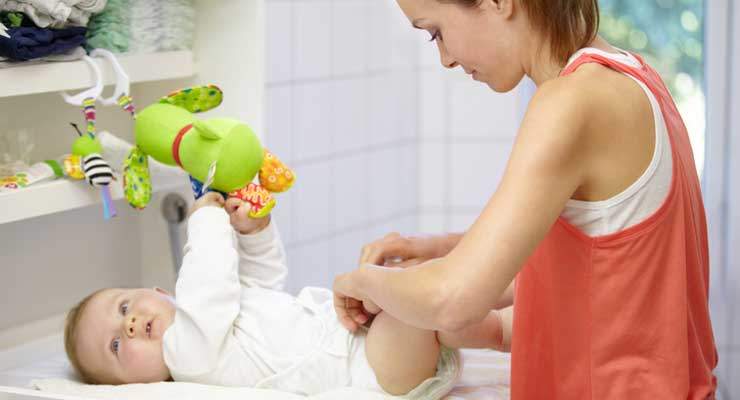Dealing with baby rashes may be one of the least fun parts of being a mom. That red, sore-looking bottom can seem like an indictment of bad parenting. It’s easy to believe that your baby wouldn’t have diaper rash if you’d remembered to change his diaper more often or used the right cream or ointment or powder to protect his delicate skin from irritation. Cornstarch is an old home remedy to help keep skin dry and reduce friction that can cause heat rashes and diaper rashes. It may, however, cause as many problems as it heals.
Why Use Cornstarch?
Diaper dermatitis, one of the most common types of rashes in babies, results from a combination of moisture, bacteria and friction in the diaper area. Baby powder is a common solution to help reduce moisture and friction, but talcum powders can get into your baby’s lungs and cause respiratory problems. Most doctors today recommend against using baby powders containing talc. Some doctors, such as those at the University of Rochester Medical Center, suggest that a light dusting of cornstarch over clean, dry, unbroken skin can reduce diaper friction and prevent diaper rash. The same treatment can help reduce heat rash and friction rash in other areas of the body, such as underarms and around the neck, where clothing rubs.
Arguments Against Cornstarch
Cornstarch may also cause respiratory problems in infants. In 1996, “Pediatric Emergency Care” reported on the case of a one-month-old baby treated for severe respiratory failure and pneumonitis after aspirating cornstarch used in changing his diapers. Cornstarch can also worsen rashes caused by a yeast infection because it provides a food source for the yeast that causes the rash. FamilyDoctor.org and many others recommend against using any sort of powder, including cornstarch, on diaper rash.
Natural Diaper Rash Care
Check your baby’s diaper frequently and change it promptly when she wets or soils it. Remove the diaper and wash the diaper area well with plain water or water with mild soap. Avoid diaper wipes with alcohol or fragrance. They can irritate and dry out your baby’s skin further. Pat her bottom dry or let it air dry. Leave the diaper off as much as possible — light and air are the best treatments for diaper rash. Prevent diaper rash with a light coating of petroleum jelly or zinc oxide ointment over the entire diaper area.
How to Use Cornstarch for Rashes
Use cornstarch cautiously on diaper rashes and other rashes if you’re sure that they’re not caused by a yeast infection. Put a little cornstarch in the palm of your clean hand and pat it onto the skin. Avoid getting cornstarch dust in the air where the baby may inhale it. Avoid using cornstarch on broken, weeping or bleeding skin.
When to Call Your Doctor
Call your doctor if your baby develops a diaper rash before he is six weeks old. Also consult your doctor if a diaper rash gets worse or doesn’t go away after two to three days, if the rash develops blisters or pimples, or if the rash extends beyond the diaper area. If the rash is bright red with a spots along the edges or if he develops the rash while on antibiotics, call your doctor. It may be a yeast infection, which requires medicated cream or ointment to heal.





